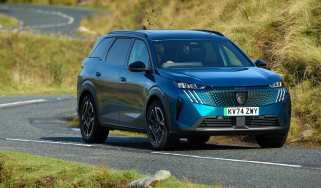'Electric classic cars are a good idea'
If electric conversions keep more classic cars on the road in future, they should be celebrated, says Vicky Parrott...
It’s funny, the fervour that classic cars spark in most people. Even for those who have only a passing interest in cars, seeing a vintage car on the road is something to get excited about.
Which is why I’ve been a little undecided about the merits of converting classics to run on electricity. Does it detract from the originality? Take the ‘heart’ out of it?
Well, I got to have a go in a couple of electric classics, recently, when I went to drive an electric Aston Martin DB6 Volante MkII and also a Swind E Classic (an electric Mini to you, me, and everyone else other than BMW’s lawyers).
The Aston is an interesting case in point. There are only 38 of these in existence, and they’re valued in the millions. But Aston Martin Works has created an electric motor that’s roughly the same size and weight as the original 4.0-litre petrol engine, which can be fitted without altering the car’s structure.
This means that you can swap your Aston’s petrol engine for a guilt- and tax-free electric motor, and then swap it back for the petrol whenever you wish without affecting the car’s originality or provenance. Provided you’ve got the circa-£200,000 that it’s likely to cost each time, that is.
A rather different take on the electric classic is the Mini conversion being offered by engineering firm Swind. This is a British company that usually specialises in race engines but it wants to branch out into electric powertrain engineering, so it’s taken the iconic original Mini and is offering a fully restored and converted Mini, capable of doing 120 miles to a charge.
This is less about preserving a classic and more about making one of the best city cars that the world will ever see more appropriate for modern cities.
Where the Aston was serene (yet slow, in its current early state of development), the Swind E Classic was all ready to be chucked around Swindon and the surrounding countryside. And it is a natty, bombastic little thing, So much fun, yet also brilliant around town, and cool in a way that no modern car could be.
Sadly, the Swind electric Mini is £80,000, so this is hardly a realistic alternative to budget electric cars like the Renault ZOE, but for the engineering involved you can see why it’s priced like that.
More to the point, I now absolutely get why electric classics are ‘a thing’. Not only are they fun and characterful despite the dramatic change of innards, they’ve been future-proofed. After all, for all we know we could be driving around in cars powered by batteries, hydrogen, or leprechaun gold in 100 years’ time, but having an electric motor in these classics means they’ll be used regardless of how our roads and legislation change.
And, as anyone who loves cars knows, the worst thing is seeing such evocative, joyful old cars relegated to static displays. Electric motors will keep more of our classics on the road, and so I’m all for it.
Most Popular

EV Deal of the Day: family-friendly Peugeot E-5008 for £261 per month

